Exceptional bishop's pendant called "ENCOLPION" - either literally the medallion worn on the breast or on the torso
Greco-Byzantine carved and openwork boxwood monk's work, around 1550, characteristic of greek Art from Mount Athos, characterized by a rustic sculpture style but nevertheless of incredible finesse.
This miniature round pendant (7cm diameter only) was originally often set by a precious frame or scabbard, probably in silver, vermeil, or gold, and includes several iconographic subjects from the New Testament.
Its rich, openwork work framing religious subjects and filling the space between them, shows an incredible and attentive work of patience that makes it possible to discern the various small biblical themas, including details of clothing and attributes of the different characters.
The miniature panel consists of 6 circular images that form a single set in Gothic rosette shape.
They include
*six scenes from the Passion of Christ,
*4 smaller portraits of evangelists in the center,
*and 3 great prophets in the lower part.
It should be noted that the sculpture of the medallion respects a surprising and free order. The scene of the resurrection of Lazarus should in a logical order be the 1st, since prefiguring that of Christ, then the Crucifixion, the descent from the cross, the Resurrection, the unbelief of St. Thomas and the empty Sepulchre.
References:
This meticulous wooden carving recalls the way of the cross-reliquary exhibited at the Louvre. It is a wooden cross-reliquary carved with 18 scenes from the life of Christ and three reliquaries at the ends, dates to XV-XVI centuries (Collection du Louvre, Main number: LP 1043, Room 501, Richelieu part).
Also to consult he BENACKI Museum collection in Athens or the Sacristy / Treasure of Meteors (Monastery in northern Greece, located on top of a huge rock mountain).
Origin:
Former Henri Verne collection (1918-2021) in Brussels (who create Bob Morane hero)
*1. The Crucifixion (top right)
There are holy women, so Mary the Mother of Jesus and Mary Magdalene, the apostle Saint John (the Evangelist) lamenting and Longinus (wearing a short soldier's skirt, not a toga like the other holy characters depicted).
On the right of Christ, the soldier piercing his body with his spear and to his left another soldier holding out a sponge in order to recover a mixture of blood and water coming out of his body, which will then be put in a vase - which will become the Holy Grail.
*2. The descent from the cross (center right)
Christ is lying on a marble slab. It should be noted that the tomb of Christ is represented as a Roman sarcophagus and not as in Jewish tradition as a rocky cavity closed by a round stone wheel that was rolled to close the vault.
The arcades in the background represent the city of Jerusalem
Mother of God holds the head of Christ, alongside Mary Magdalene and St. John the Evangelist...
*3. The Resurrection of Christ, lower right
It's not only the resurrection of Christ but also of all that he incarnates, of the resurrection of the whole human race.
Christ has his feet on 2 boards, which represent the shaken gates of Hell, the place for Dead people. Christ holds by his hands Adam, the bearded man and Eve, the veiled woman.
The left side of Christ represents the masculine gender, with behind Adam, 2 crowned characters, David and Solomon, embodying respectively Wisdom and Fidelity to God.
Behind Christ is the mandorla (with streaks representing radiation), representing the Light emanating from Christ rescucity.
4. The Resurrection of St Lazarus (middle left)
Lazarus is represented standing in his tomb, with at his feet 3 women, including Martha and Mary, his sisters of Bethany. They implore Christ, who extends his hand in a gesture of blessing. Behind Christ stand 4 of the apostles, including St. Peter and St. John.
The resurrection of Lazarus is a miracle of Jesus recorded only in the Gospel of John (John 11:1–44), in which Jesus brings Lazarus of Bethany back to life four days after his burial. Martha and Mary of Bethany, sisters of Lazarus, ask Christ for the resurrection of their brother, already in the tomb for several days. This symbolic theme is often used to prefigure Christ's own Resurrection.
This scene is here placed in a surprising logical order that one would expect in the succession of the different tondos, since it traditionally prefigures the resurrection of Christ. It should therefore rather be found at first; on the top center, at the beginning of the religious narration (either at the top right, then a shift of the other 5 scenes in a clockwise direction).
*5. The Empty Sepulchre (top left)
The Myrophores (The Holy Women mentioned in the New Testament who participated in Jesus' burial and discovered the empty tomb after His Resurrection. This term usually refers to the Holy Women carrying myrrh who, going in the early morning to the tomb of Jesus, found it empty)
An angel with outstretched wings kneels where Christ's body was, above the open tombstone of the sarcophagus (still the Roman-style representation of Christ's tomb).
*6. The Incredulity of St. Thomas (bottom left)
Christ is surrounded by St. Peter with a short beard, St. John the beardless evangelist, and 2 other apostles, (St. James son of Zebedee is also frequently depicted as one of Christ's favorite apostles)
St. Thomas did not believe in the resurrection and touches with his finger the wound of Christ.
Windings separating round reserves framed religious scenes and representations symbolize the vine shoots, and the crosses the bunches of grapes. They traditionally separate the various religious iconographic scenes.
*We can see, in the medaillon center, 4 evangelists Matthew, Mark, Luke and John arranged in 4 smaller round reserves, forming between them a square.
*In the lower part, it would be, on each side, 2 Jewish prophets reading the Scriptures on scrolls ("Elitarion"):
-Ezekiel, the prophet of the Resurrection of Dead people, -which means in Hebrew "God will strengthen". He is an Old Testament prophet who probably lived in 6th century B.C. His name means "May God strengthen him." He is credited with the Book of Ezekiel, third in the canonical order of the great prophets (Isaiah, Jeremiah, Ezekiel, Daniel). For Judaism and Christianity, Ezekiel is a priest of the Temple in Jerusalem.
-Isaiah, whose name means "Yahweh is salvation", lived in Jerusalem in 8th century BC, at the time of King Hezekiah, when the great neighboring power, Assyria, was becoming threatening. The prophet denounces the relaxation of morals that announces the imminent defeat, but salutes the saving role of the Death of Christ, unjustly sacrificed on the Cross.
* Finally in the center below, the prophet Jonah, sent by God to Nineveh, symbol of oppression and violence, to condemn the city and invite it to repent, but he flees in the opposite direction, embarking on a ship bound for Tarshish to escape the word of God, and flee his dangerous mission as a prophet in pagan land.
Jonah gets into a boat, then goes down into the hold and falls asleep. The ship is caught in a great storm. The sailors pray in vain to his own deity and then cast spells to discover the cause of this misfortune, and the spells designate Jonah then plunged into a deep sleep at the bottom of a hold. The crew interrogates their passenger, who affirms his identity as "Hebrew" and "proposes himself to them of himself to be thrown into the sea in order to calm the rushing waves". He is thrown into the sea, which calms down immediately.
Swallowed by a large fish (often improperly called "whale") for three days and nights, Jonah begins to pray regretting his escape and is vomited on a beach by the sea monster.
The New Testament mentions Jonah. Jesus taught that Jonah, swallowed by the fish, announced his own death and resurrection.
Sizes 7cm diameter by 1 to 5mm thickness only !!!
Perfect condition. These medallions were often framed in heany style "baroque" goldsmith. (please check last photo)
This real museum piece is, it in my mind, higher quality than the one from MOMA in New York, depicting St John slaying the dragon (1st piece on the last photo), while the Louvre Museums or the British Museum have any; The other reference pieces are all part of monasteries of Mount Athos collections , which is relatively restricted access ! (last photo)
All my warm thanks to the Orthodox priest Theotokis from Monastery of Solan (Gard, southern France) who demonstrated once again with brilliance and talent his deep knowledge of the relgious iconography and these treasures from the region where he himself followed his own spiritual formation, Mount Athos in Greece.




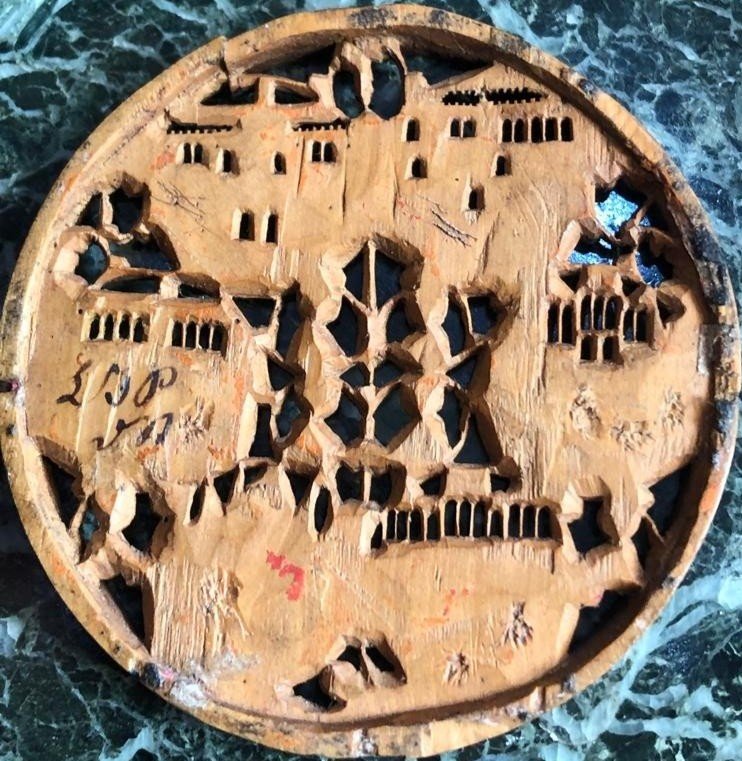



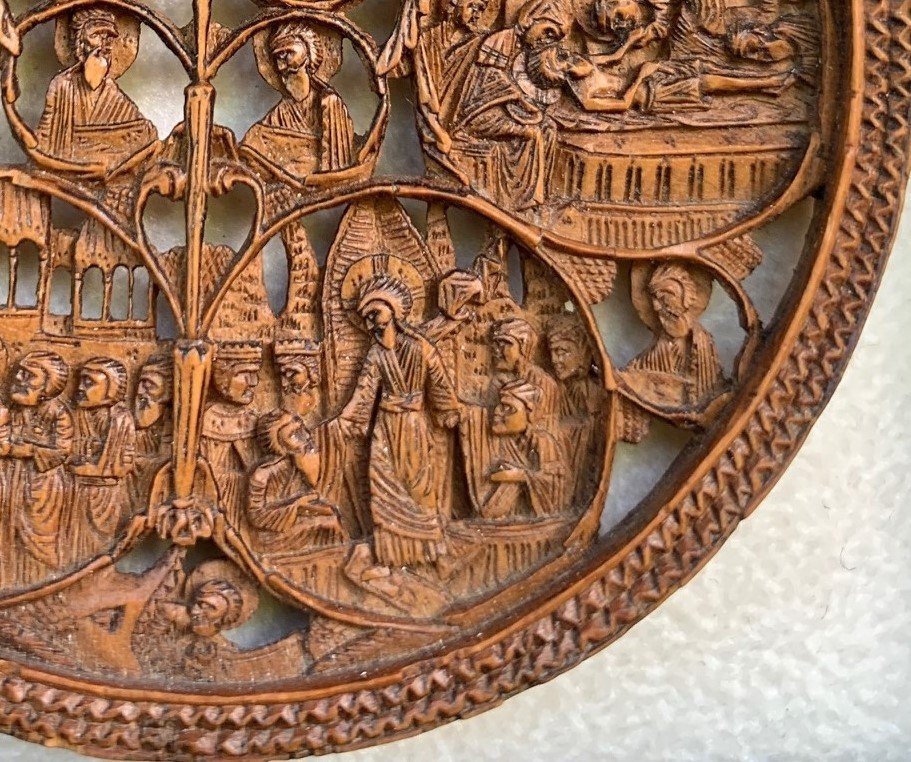
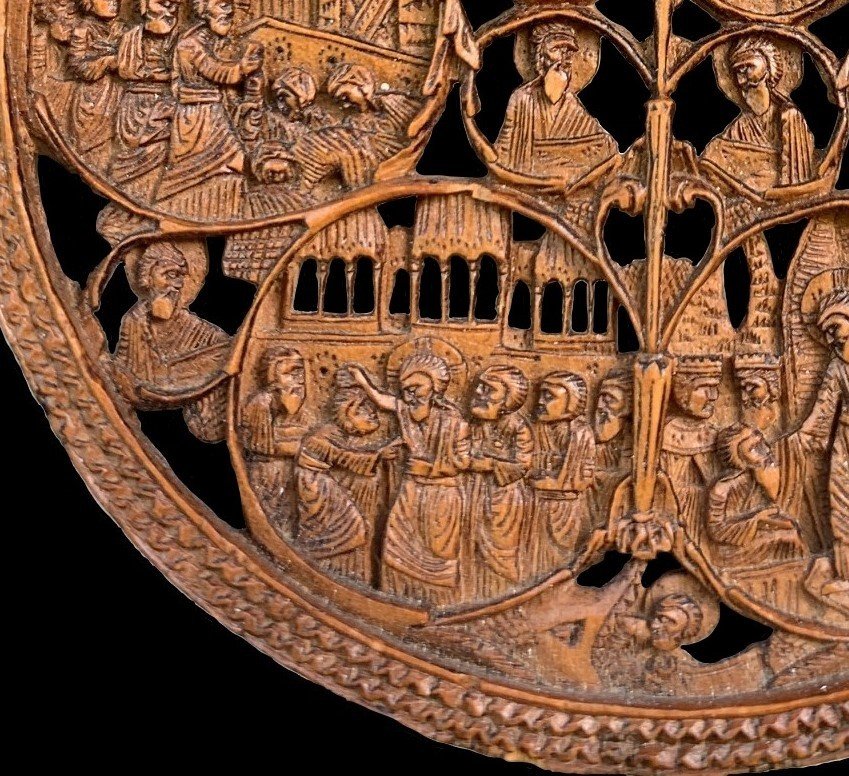


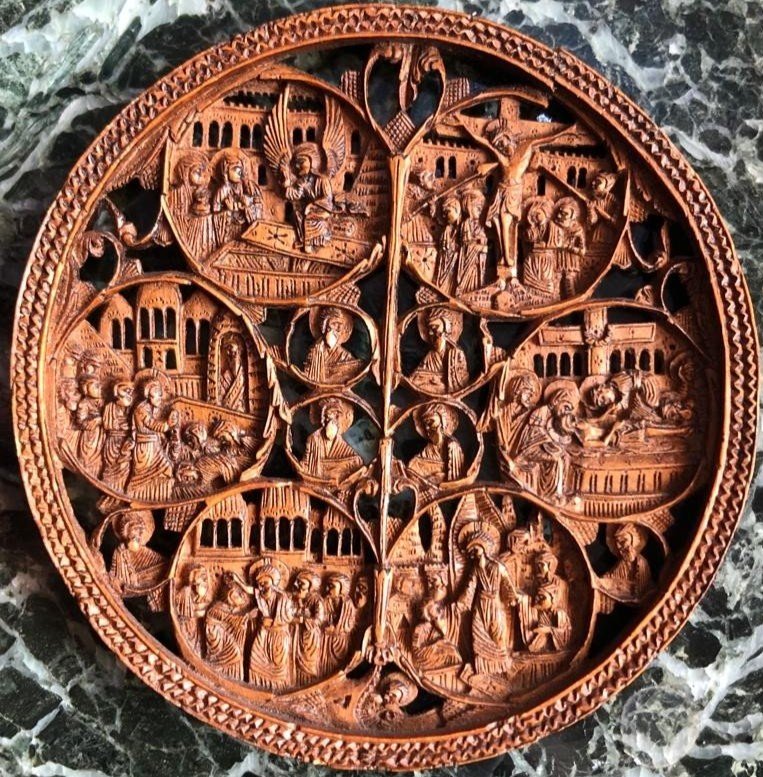

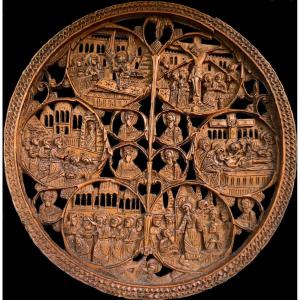














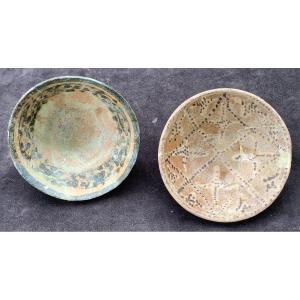




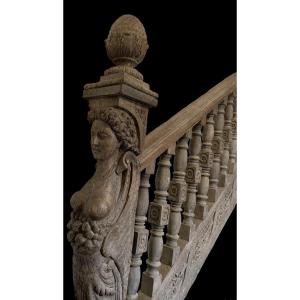
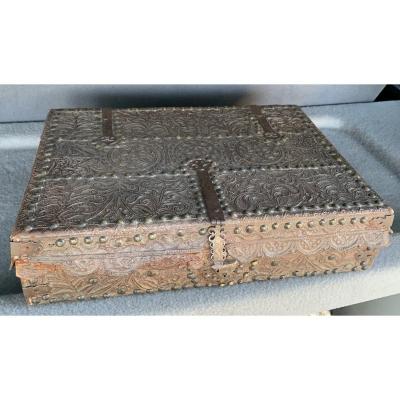
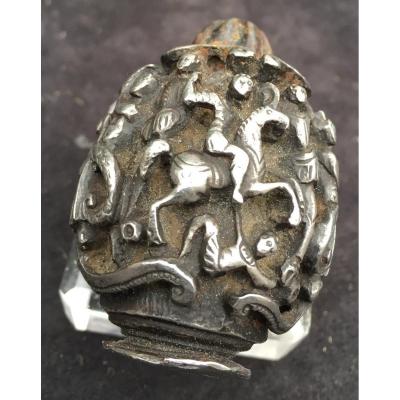


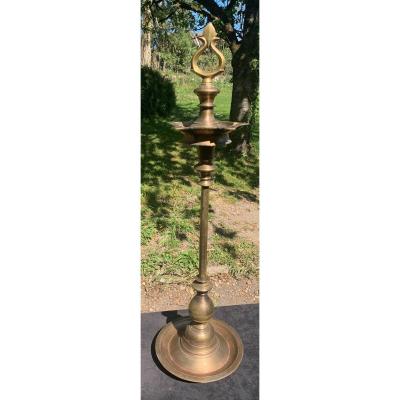





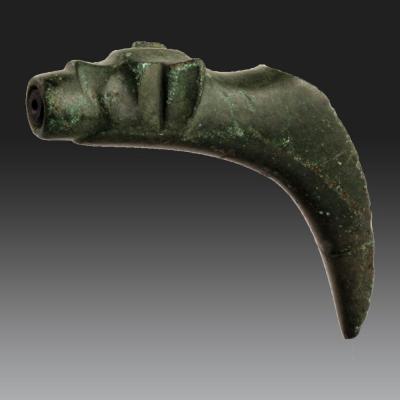




 Le Magazine de PROANTIC
Le Magazine de PROANTIC TRÉSORS Magazine
TRÉSORS Magazine Rivista Artiquariato
Rivista Artiquariato